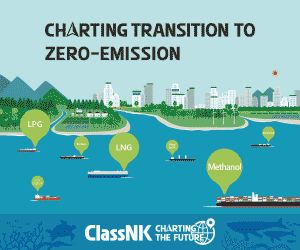A new international research initiative will measure hydrogen emissions from operating infrastructure in North America and Europe, filling a gap where little empirical data exist today.
With commercial hydrogen operations poised for global expansion, the new information aims to help producers, regulators, investors and others understand potential emission sources and how to address them.
The study brings together four global industry leaders: Air Products, Air Liquide, Shell and TotalEnergies; global not-for-profit, Environmental Defense Fund; academic scientists from Utrecht University, University of Rhode Island, West Virginia University and Cornell University; and applied research and technology development firms, Aerodyne Research, TNO and Transport Energy Strategies.
The study seeks to quantify hydrogen emission rates from facilities in the hydrogen value chain, including steam methane reformers, pipelines and compressors, liquefaction facilities, oil refineries, fueling stations, hydrogen-powered vehicles and other hydrogen infrastructure.
Researchers are using the first commercial high-precision, fast hydrogen analyzers and mobile/portable sensing platforms to detect and characterize site-level and component-level hydrogen emissions with accuracy and speed not seen before.
By combining data gathered directly from operating facilities with expertise shared by operators, our aim is to contribute rigorous, scientific evidence to an environmental issue that remains insufficiently explored and understood
… said Dr. Thomas Röckmann, Professor of Atmospheric Physics and Chemistry, Utrecht University.
Hydrogen, which today is used primarily for refining and chemical production, has seen significant momentum in recent years with potential new applications linked to the energy transition and decarbonization. Over 60 countries have adopted national hydrogen strategies, according to the International Energy Agency, with targets and substantial investments being made to scale up production and develop supporting infrastructure.
While hydrogen holds important potential to contribute to deep decarbonization – particularly in sectors that are difficult to electrify, including heavy industry and long-distance transport – it presents its own emissions challenges that need to be understood and carefully managed to optimize this potential.
Studies indicate that hydrogen released into the atmosphere indirectly causes warming through chemical reactions, which can reduce the intended climate benefits of hydrogen deployment if not addressed. Accurate emissions data can better inform sound policies and practices to prevent leaks and other emissions from both existing and emerging hydrogen systems.
As hydrogen becomes an increasingly important part of the energy system, developing a robust, data-driven understanding of its emissions is essential to supporting informed decisions and guiding future investments in the sector
… said Steven Hamburg, Chief Scientist and Senior Vice President, Environmental Defense Fund.
During the 2024 GREEN4SEA Athens Forum, Panos Zachariadis, Technical Director, Atlantic Bulk Carriers Management Ltd., focused on challenging the common perceptions and misconceptions surrounding the role of green hydrogen in decarbonizing the shipping industry. As explained, the environmental impact of hydrogen production varies significantly depending on its source:
- Brown hydrogen, derived from coal.
- Gray hydrogen, sourced from natural gas.
- Blue hydrogen, a term applied when the CO2 produced from natural gas is captured and stored.
- Green hydrogen, produced through renewable energy electrolysis.
- Pink hydrogen, generated using nuclear power.
- Yellow hydrogen, harnessed from solar power.
In support of advancing the science related to hydrogen emissions, the four industry partners are providing access to their facilities for university researchers to gather data. They will also provide operational context to derive high-quality insights from the data. All study participants share in the objectives of representative data and scientifically rigorous interpretation of results.
Field measurements for the study began in March this year and will continue through early 2026. Data will be aggregated, anonymized, published in peer-reviewed journals and made publicly available.
The study is fully funded by philanthropic contributions to Environmental Defense Fund.
































































